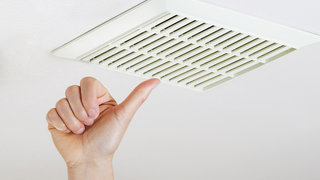Home Ventilation
5 min read
A well-insulated home that reduces the amount of energy needed for heating is one that has good ventilation. Ventilation prevents the accumulation of humidity and air pollutants that may cause health risks.

© Getty/tab1962
Indoor air quality can be worse than that of outdoor air, even in cities. Indoor air often contains the same contaminants as outdoor air – i.e., particulates, pollen and nitrogen compounds – in addition to emissions from inside sources, such as cleaning products, flooring, candles and incense. Moreover, regular moisture from cooking, showering and breathing can favor mold growth(1).
Proper Airing for a Healthy Home
The first rule of thumb is to air out regularly. Because of the coronavirus epidemic, French health authorities are now recommending that people air their homes every day by keeping their windows wide open for ten minutes, morning and night, regardless of the outside temperature.
Ventilation, Not a New Concern
In the past, open windows, fireplace chimneys and frequent cracks and gaps in walls ensured a natural flow of air. Through time, as homes became better insulated, ventilation became an issue.
At the end of the 1960s, it became mandatory to install top and bottom air vents to permit air circulation in kitchens and bathrooms. Later, in the 1970s, mechanical ventilation devices emerged, initially small window extractor fans with a pull cord.
CMV Now the Norm
In France, regulations mandate the installation of a controlled mechanical ventilation (CMV) system in all new homes to ensure the flow of air throughout the dwelling.
Fresh air drawn from outside through small inlets positioned near the windows circulates throughout the home by passing through the space at the bottom of the doors, while the stale air is evacuated by extractor units placed near the ceiling of the kitchen, bathroom and toilet. The evacuation system is generally equipped with a fan that vents the air outside, via the building or home’s chimney shaft.
Dual-Flow CMV
These systems have been perfected over time. It is now possible to adjust the airflow rate according to the relative humidity. In a dual-flow CMV system, as the name suggests, mechanical devices are used both to draw air inside and to expel air outside. The incoming fresh air is preheated by a
exchanger that recovers heat generated by the home, without mixing the two airflows. The challenge is to develop systems that are not noisy and do not consume too much
.
The Current Epidemic
The 2020-2021 coronavirus epidemic has brought the issue of home ventilation to the forefront. Three recommendations should be observed:
- Air your home every day by opening the windows for ten minutes at morning and night.
- If you have a CMV system, keep it running all the time.
- Make sure the system is functioning properly. A simple test is to place a piece of toilet paper in front of the extraction vent. If it stays in place, that means it is working.
In an office environment, internal air systems should be turned off. That is because, unlike with a CMV system, the indoor air is not being evacuated and can help spread the virus.
Sources:
- See the ADEME guide (in French)






















